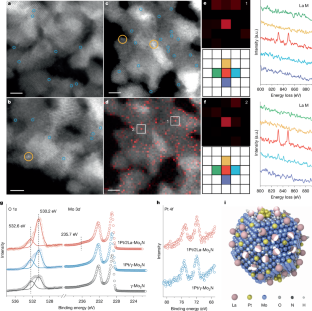2025-02-26 アリゾナ大学
<関連情報>
- https://news.arizona.edu/news/james-webb-telescope-reveals-planet-forming-disks-can-last-longer-previously-thought
- https://iopscience.iop.org/article/10.3847/2041-8213/ad99d2
JWSTによる30年前の原始惑星系円盤の初観測で、炭素が豊富な後期段階が明らかになる The First JWST View of a 30-Myr-old Protoplanetary Disk Reveals a Late-stage Carbon-rich Phase
Feng Long (龙凤), Ilaria Pascucci, Adrien Houge, Andrea Banzatti, Klaus M. Pontoppidan, Joan Najita, Sebastiaan Krijt, Chengyan Xie, Joe Williams, Gregory J. Herczeg (沈雷歌),…
The Astrophysical Journal Letters Published: 2025 January 6
DOI:10.3847/2041-8213/ad99d2

Abstract
We present a JWST MIRI/MRS spectrum of the inner disk of WISE J044634.16–262756.1B (hereafter J0446B), an old (∼34 Myr) M4.5 star but with hints of ongoing accretion. The spectrum is molecule-rich and dominated by hydrocarbons. We detect 14 molecular species (H2, CH3, CH4, C2H2, 13CCH2, C2H4, C2H6, C3H4, C4H2, C6H6, HCN, HC3N, CO2, and 13CO2) and two atomic lines ([Ne ii] and [Ar ii]), all observed for the first time in a disk at this age. The detection of spatially unresolved H2 and Ne gas strongly supports that J0446B hosts a long-lived primordial disk, rather than a debris disk. The marginal H2O detection and the high C2H2/CO2 column density ratio indicate that the inner disk of J0446B has a very carbon-rich chemistry, with a gas-phase C/O ratio ≳2, consistent with what has been found in most primordial disks around similarly low-mass stars. In the absence of significant outer disk dust substructures, inner disks are expected to first become water-rich due to the rapid inward drift of icy pebbles and evolve into carbon-rich as outer disk gas flows inward on longer timescales. The faint millimeter emission in such low-mass star disks implies that they may have depleted their outer icy pebble reservoir early and already passed the water-rich phase. Models with pebble drift and volatile transport suggest that maintaining a carbon-rich chemistry for tens of Myr likely requires a slowly evolving disk with α-viscosity ≲10−4. This study represents the first detailed characterization of disk gas at ∼30 Myr, strongly motivating further studies into the final stages of disk evolution.



